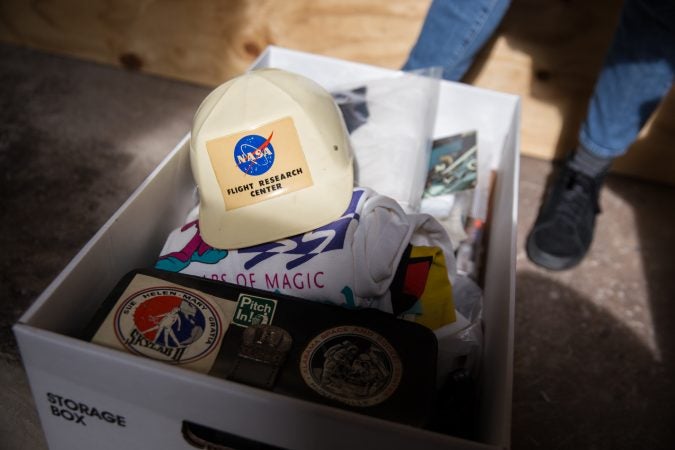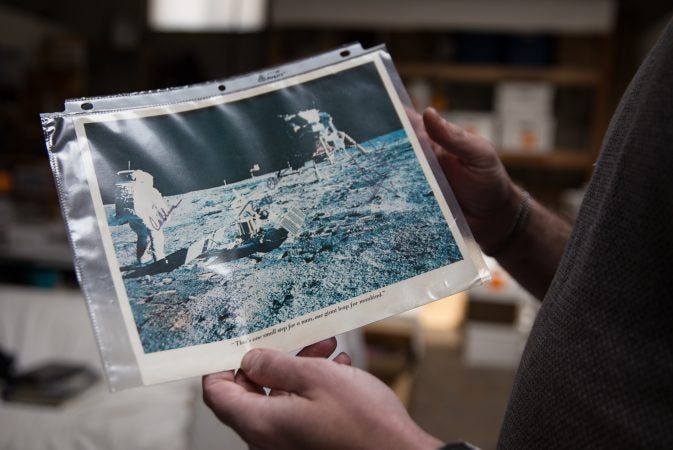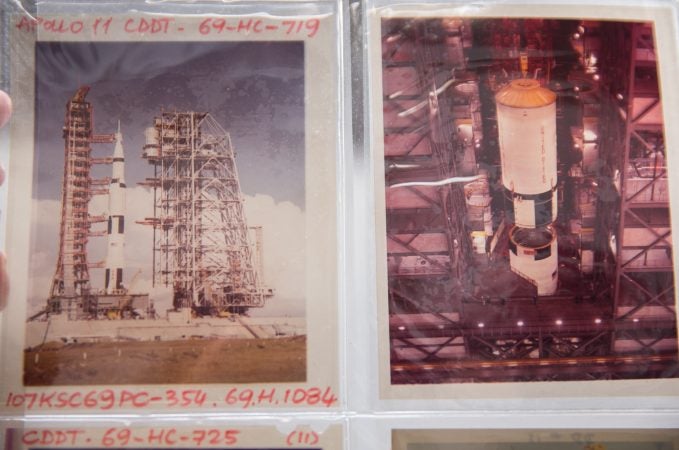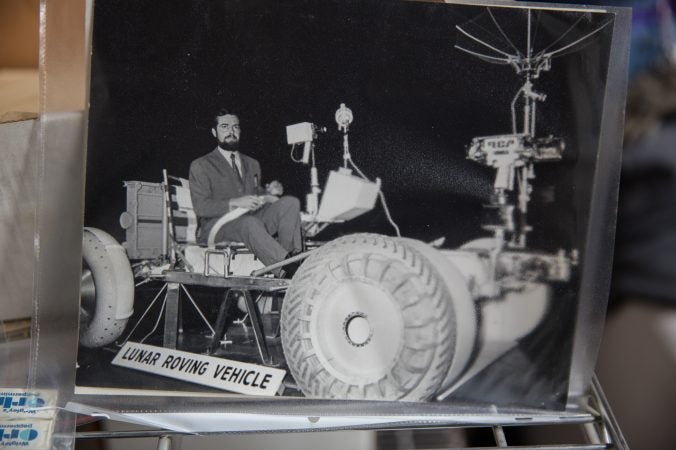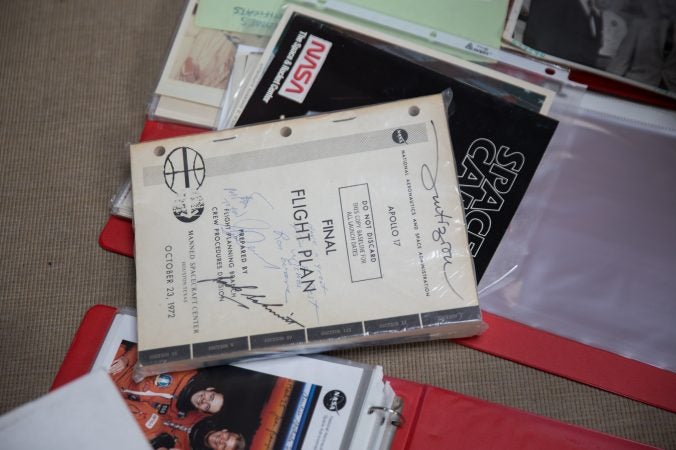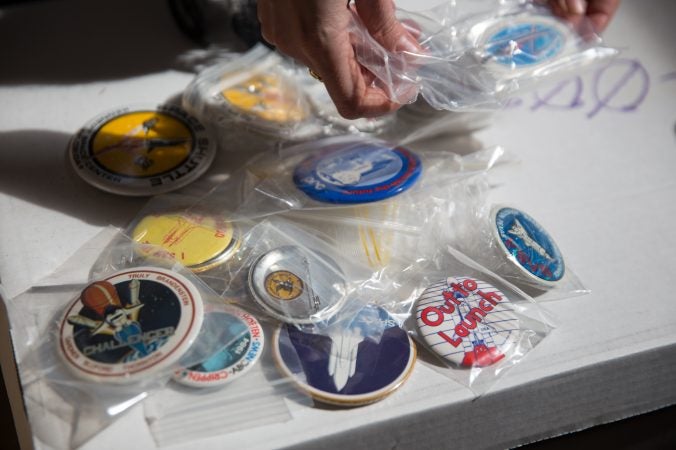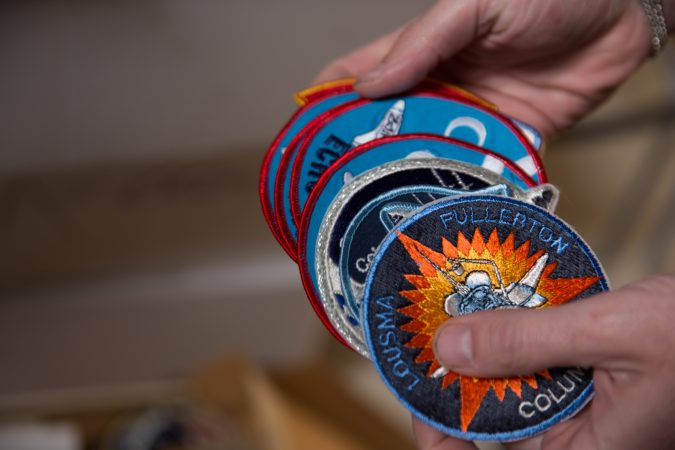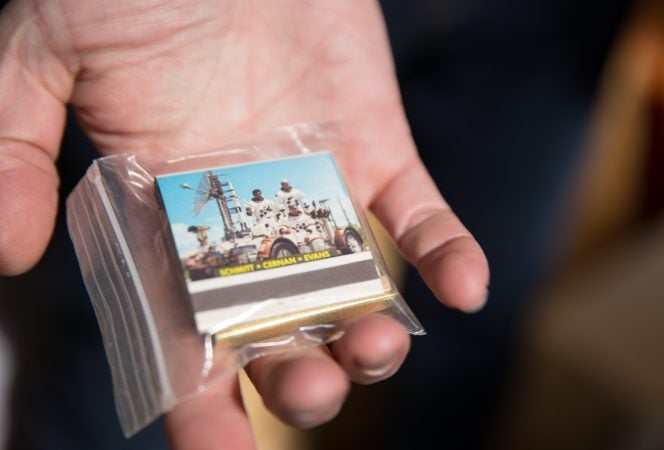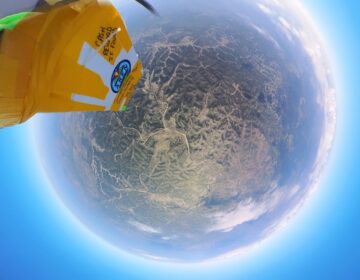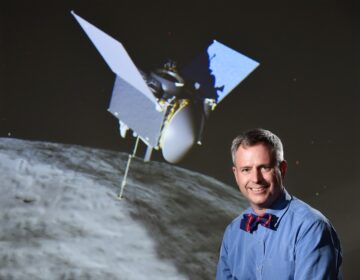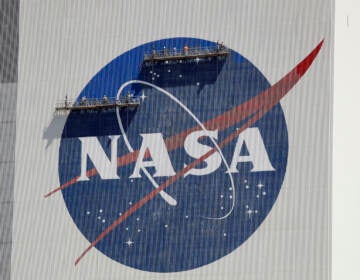Collection of NASA Apollo Program memorabilia looking for a new home
French journalist Jacques Tiziou left behind thousands of collectors’ items related to space travel. His son is cataloguing the artifacts, and hopes to share them.
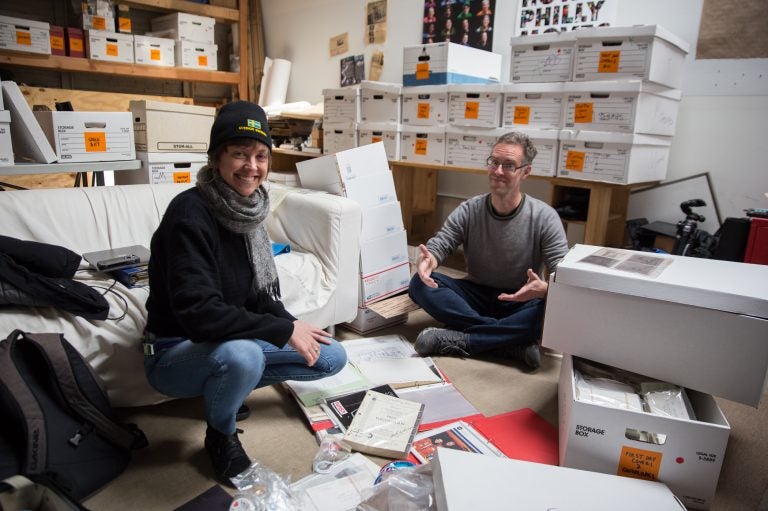
J.J. Tiziou and Jenna Horton sift through memorabilia from the space program. Jacques Tiziou, J.J. ’s father, was a French aerospace journalist and collector. With the 50th anniversary of the Apollo 11 spaceflight and moon landing coming up, J.J. is hoping to preserve and share the “space junk” collection. (Lindsay Lazarski/WHYY)
Artist JJ Tiziou is practically drowning in space travel memorabilia. His small studio in West Philadelphia is filled with boxes and boxes of NASA pins, T-shirts, stickers, envelopes, matches, stamps, photos, news clippings — all related to the Apollo space missions.
He calls it his “strange inheritance.”
His father, Jacques Tiziou, was a French journalist who lived in Florida and brought news of the different space missions to French audiences. He was obsessed with space, and was a passionate archivist and collector. Famous astronauts were frequent visitors at the Tiziou home, and showered the reporter with little tokens of their affection.
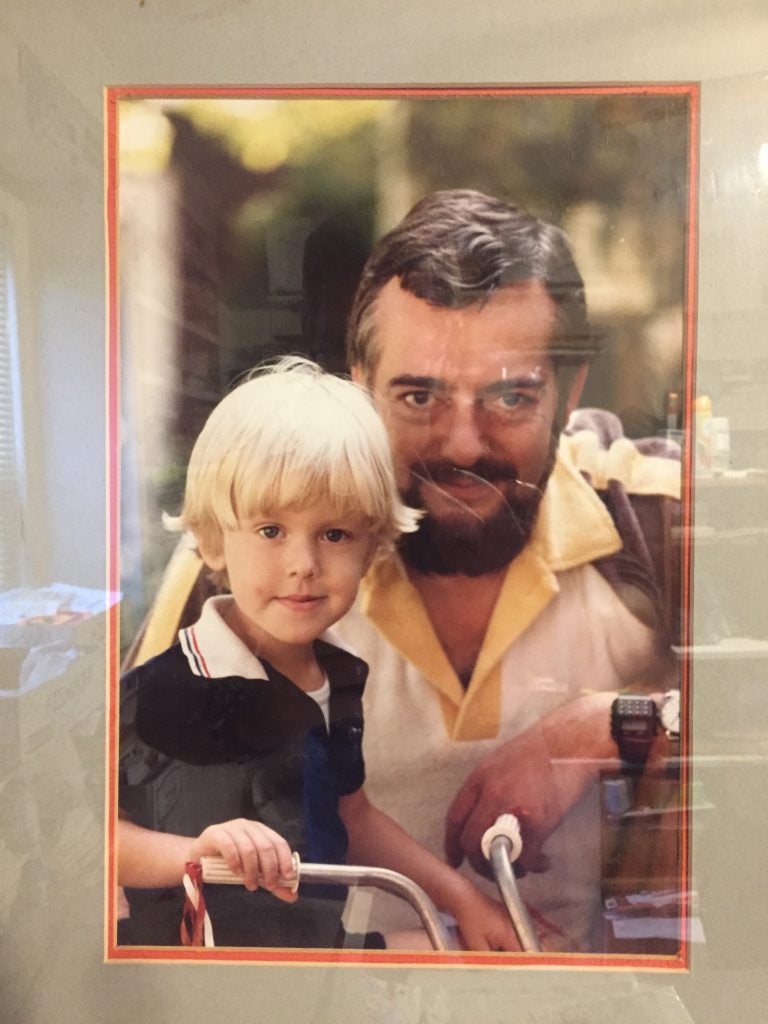
Jacques Tiziou kept them all — and wanted to share them with others. Any item, no matter how small or mundane, was considered sacred if it had been on a space mission.
“If an astronaut friend would give him a roll of dental floss that had been in orbit on a space shuttle, he’d cut it into centimeter-long pieces and put it into little plastic ziplock bags,” said JJ Tiziou. “He’d put in a tiny little certificate saying, ‘This is to certify that this little piece of dental floss, or insulation is from this rocket’ — these tiny certificates, and there’d be hundreds of them.”
These “space bits” are very small — smaller than a dime — and each is carefully catalogued with a printed miniature certificate.
“This tiny piece of rubber comes from the end of the ninth arm of the LUT1, which is the umbilical tower that connects to the Saturn 5 rocket,” one certificate reads.
Since Jacques Tiziou passed away in February 2017, JJ has been sorting through his father’s collection, trying to archive things. Thousands of matchbooks with pictures of rockets and astronauts. Hundreds of commemorative mugs and glasses, and enough T-shirts to clothe a small army.
Among some of the papers, JJ found a framed, flattened-out box that used to have a roll of film in it. His father used the box in a pinch, for autographs, during the rollout of the Apollo 11 mission.
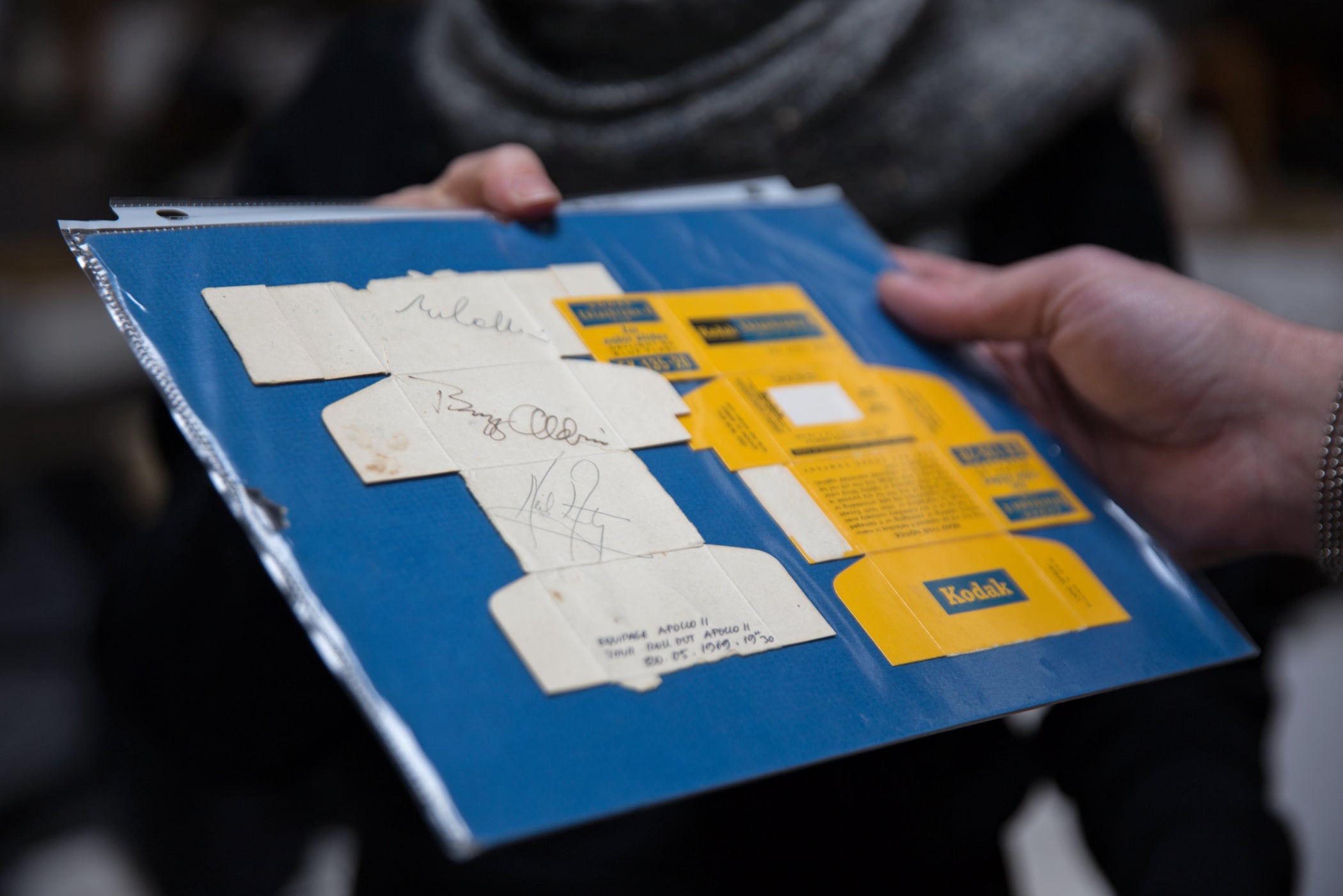
He was right there, and saw the famous astronauts approaching.
“So he got them to autograph this little Kodak film canister packaging. ‘Here come the guys, and I have got a pen, and I have this box of Kodak film,’ so it’s signed by Neil Armstrong, Buzz Aldrin, and Michael Collins.”
JJ has also found a lot of very old astronaut food — and even eaten some of it.
“Some of the long-expired astronaut ice cream was not very good, but I tried some freeze-dried peaches that were best eaten before 1970, they were older than I am — they were delicious!”
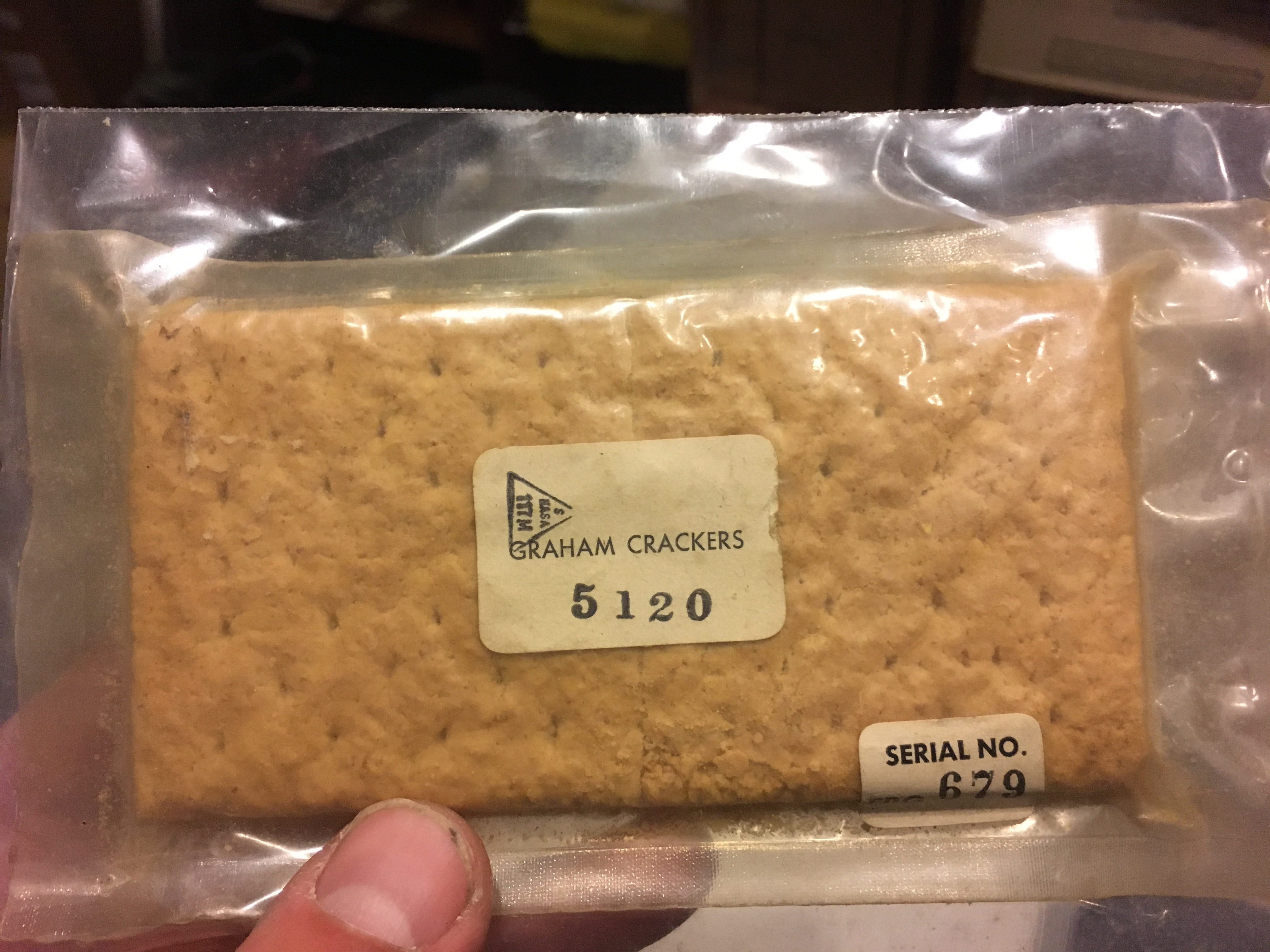
Science historian Ingrid Ockert, a fellow at the Science History Institute in Philadelphia, has seen the collection, and said it is a valuable slice of 1960s space-exploration zeitgeist.
“It gives us this window of the artifacts that end up shaping public memory, the ways people thought about space and imagined space travel,” Ockert said. “This stuff is not saved normally, this is what people toss out usually.”
JJ Tiziou has just launched a Kickstarter campaign to help fund his efforts to catalog this collection and find a new home for it. He wants to save his father’s legacy and passion from the landfill.
“My hope is to share it with people who will be delighted by it — because he loved to share this stuff with people.”
WHYY is your source for fact-based, in-depth journalism and information. As a nonprofit organization, we rely on financial support from readers like you. Please give today.



